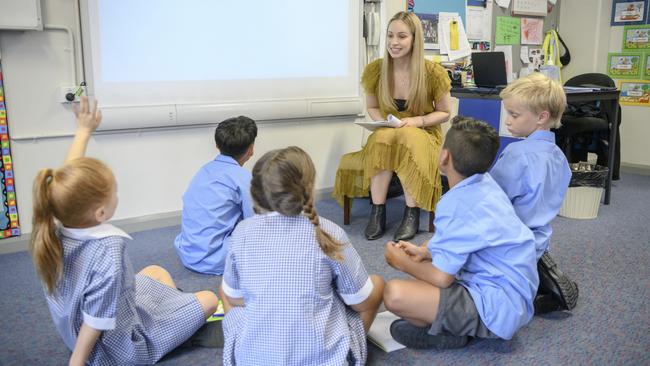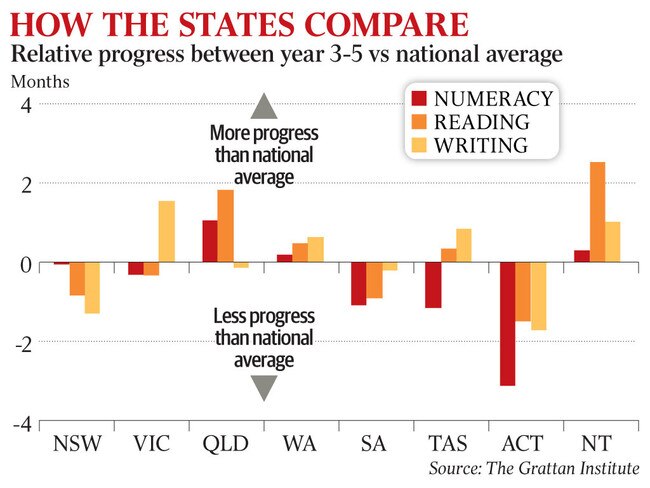Postcodes key to students’ progress
Where students live is the largest factor in determining how much learning progress they make, new research reveals.

Where students live, rather than whether they attend independent, Catholic or government schools, is the largest factor in determining how much learning progress they will make throughout their education, new research reveals.
Analysis of historical NAPLAN data shows marked differences between the states and territories in the level of progress students make between Years 3 and 5 and Years 7 and 9, once family background, geographic location, indigenous population and other factors contributing to school advantage or disadvantage are taken into account.
The latest report from the Grattan Institute — measuring student progress — reveals Queensland students have achieved above-average learning progress in primary school numeracy and reading, making 26 months of progress over the two years between Years 3 and 5 when they are required to sit the NAPLAN tests.
In the Northern Territory, where NAPLAN achievement scores have lagged since testing began, students have recorded three months’ more reading progress than the national average, when accounting for educational disadvantage, and progressed in line with the national average in the other categories.

In comparison, ACT students make two to three months’ less progress than the national average in primary and secondary school across all testing domains. That is despite Canberra’s relative affluence and educational advantage.
Grattan Institute school education program director Peter Goss said the latest research, which translates NAPLAN scores into a typical student achievement at each year level as well as the rate at which a typical student moves through the school levels, showed that a significant proportion of Australian schools had failed to deliver at least one year’s learning progress for every student for each year of schooling, falling short of the bar set in the latest Gonski education review.
Many of them were disadvantaged schools, putting to rest the misconception that it was the advantaged schools that were coasting, Dr Goss said.
“About 12 per cent of schools — so one in eight — consistently make much less than a year’s worth of progress each year, defined as less than 10 months of learning progress for every year in school,” he said.
“To deliver on Gonski 2.0’s goal that ‘every student makes at least a year of progress every year’, state governments should give priority to low-achieving, disadvantaged schools which make the lowest growth across the system.”
Dr Goss said the states and territories should ensure they delivered needs-based funding to schools and direct that funding to areas that would make the most difference.
He said focusing on improving teaching practices identified as more common in high-achieving, advantaged schools could also bring benefits.
Dr Goss singled out Victoria, one of the first states to embrace needs-based funding. According to the research, disadvantaged Victorian schools generally made four months’ more progress than the national average from Year 7 to Year 9.
ACT Education Minister Yvette Berry acknowledged the Grattan report and that ACT was “no longer as far in front as in previous years”.


